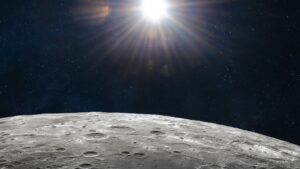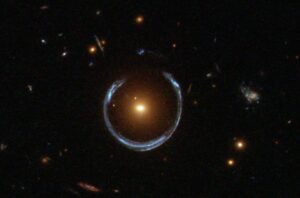A massive envelope of trash orbits Planet Earth, but from the ground, it’s usually hard to tell one object from another. A vague twinkle tracing across the night sky could be a spent rocket stage, a decommissioned satellite, or just a cloud of dust and paint flakes.
Never before has a set of hand tools orbiting the planet become so conspicuous.
But that’s what happened after two astronauts working to repair equipment on the exterior of the International Space Station (ISS) dropped a few tools. The bag they were in is the size of an airline carry-on, but the sun’s light reflects off it so strongly that it is almost visible to the naked eye. And it is visible through binoculars.
It may seem hard to fathom. But due to the satchel’s reflectivity and proximity to the ISS, it should actually be relatively easy to spot from almost anywhere with rudimentary equipment.
Picture taken #fromspace onboard the @Space_Station by @JAXA_jp astronaut @Astro_Satoshi
EVA #89 lost tool bag ⚒️🛰️
cc @AstroJaws @lunarloral @AstroAnnimal#Expedition70 #ISS pic.twitter.com/LSMXL3aQ44— Riccardo Rossi – IU4APB – @AstronautiCAST co-host (@RikyUnreal) November 7, 2023
An ‘Oops’ moment for astronauts
Astronauts Jasmin Moghbeli and Loral O’Hara lost track of the bag during a spacewalk in early November, and now it’s hurtling along a similar orbital path as the ISS, just ahead it.
According to Earthsky, the bag reaches 6th magnitude brightness from Earth when sunlight contacts it. Under very dark skies, that’s brilliant enough for people with excellent eyesight to see it. And because the ISS is the brightest object in any night sky except the moon, finding the tool kit’s position shouldn’t be difficult.
No problem if you’re near a city, either. IFLScience reported a normal pair of bird-watching binoculars can help you spot it in a rural area. And if you’re a city dweller with a small telescope, just pack your rig and take a quick trip to the suburbs.
Ninety percent of the world’s population resides under the orbital path of the ISS, according to NASA. You’ll want to try to catch it around dawn or dusk because sunlight reflection is the only reason it’s visible from Earth.
Conversely, those are the hardest times to see a 6th magnitude object.
Cue up your skills, skywatchers, and do it soon: the object will soon descend into Earth’s outer atmosphere and become toolbag toast.






